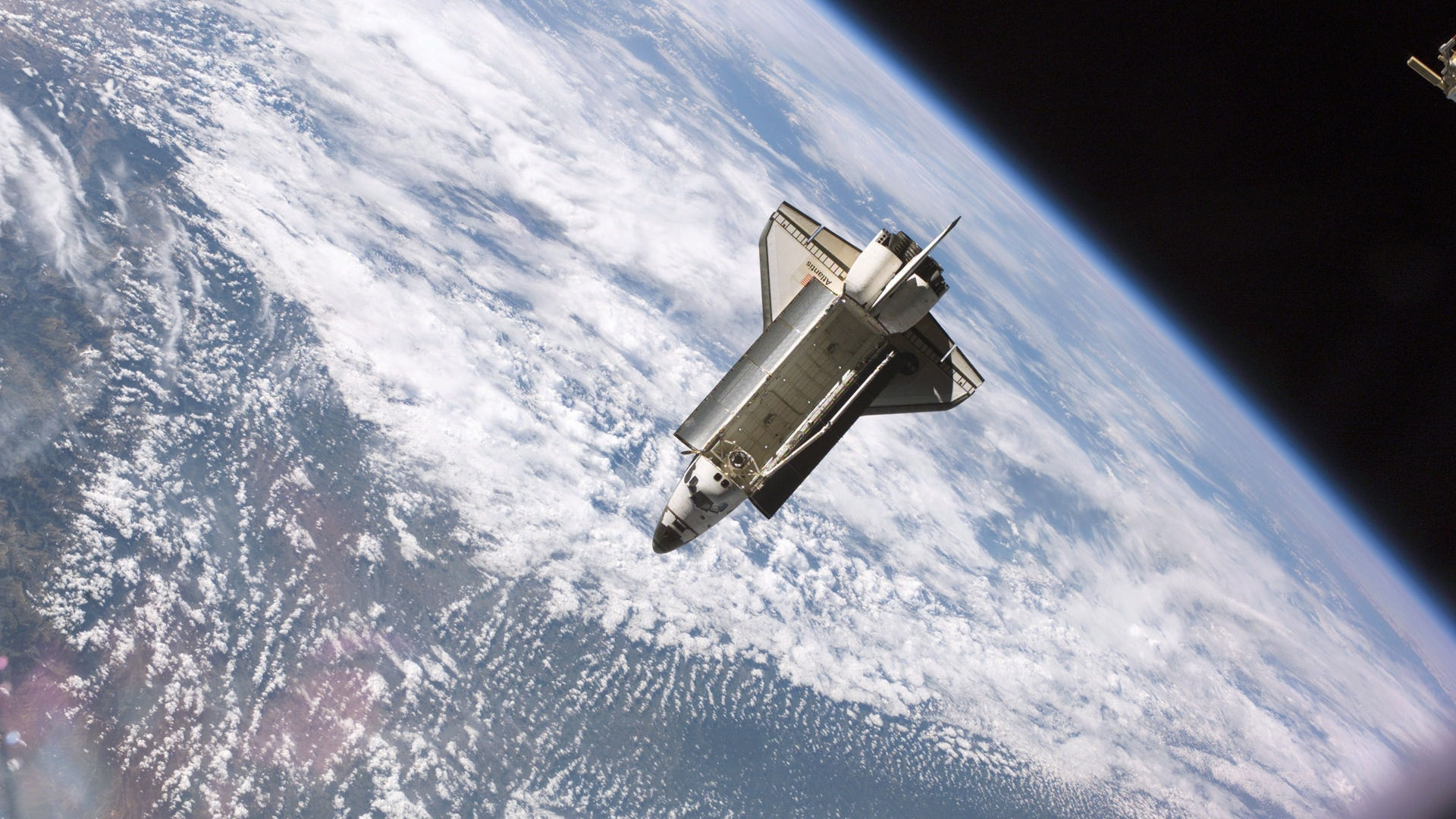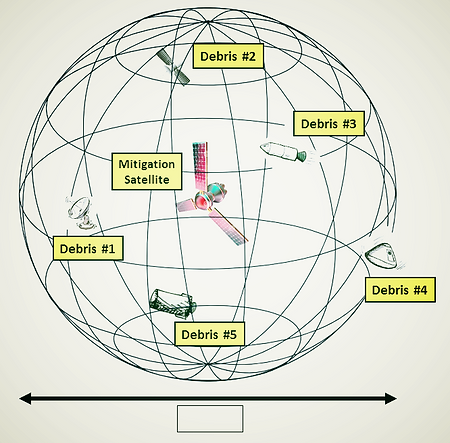
Orbital debris mitigation begins with a solid understanding of relative motion in space. In close proximities, relative motion of spacecraft are described by the Clohessy-Wilshire (Hill) equations. Accurately predicting the rendezvous trajectories of the target debris can be very challenging. More information regarding orbital debris can be found in the Background section. The extension of this research project is on the proximity operations of a hypothetical capture satellite. This research project will solely focus on the most fuel-efficient (minimum ΔV) trajectory of mitigating 5 pieces of debris within a close proximity of this specialized satellite. In essence, the project is a travelling salesman problem, but in space. Instead, the project can be thought as, "The Travelling Astronaut Problem".
Project Introduction
Rendezvous missions can be very complicated. This hypothetical mission will explore a realistic scenario that can happen in future missions to mitigate debris. To simplify the project and provide and emphasis on astrodynamics, as opposed to satellite navigation and control, some assumptions had to be made. These assumptions include:
-
impulsive burns
-
perfectly circular orbits for satellite and debris
-
negligible perturbations
-
close proximities
-
once the mitigation satellite reaches the debris, it is successfully and immediately mitigated
-
negligible debris spin rates, torques, and dynamics
-
no external forces on any of the bodies
Assumptions
Project Concept
The figure to the right shows the concept of this project. There is one specialized mitigation satellite with 5 targets. The algorithm will determine the most efficient sequence to collect the debris. Relative motion is not intuitive in space, which makes this mission very interesting. As you capture one target, the other targets are simultaneously moving. The most concerning orbital debris regimes based on NASA's proposal for debris removal is shown in below in Figure 2.


For this analysis, the satellite was selected to be at an altitude of 1000 km, with an inclination of 80 degrees. These orbital parameters contain a large density of debris. A Δt of 1 hour was chosen, making the mission time being a total of 5 hours. The Hill equations break down and become highly inaccurate for extremely large time steps. The satellites initial parameters are tabulated below. The initial positions of the debris were specifically chosen to be: above, below, ahead, behind, and diagonally away from the satellite. This was done by slightly changing the semi-major axis, true anomaly, and inclination. Keep in mind, the second table is with respect to the satellite in the first table. Looking at the second table, it can be seen that a slight change on inclination has a huge impact on the relative velocity in the z - direction. As expected, a slight change in true anomaly yields a large relative distance in the y - direction.

Figure 2. Most Concerning Debris Regimes [2]
Figure 1. Project Concept
1500 m

Table 2: Initial States of Debris in Relation to Satellite
